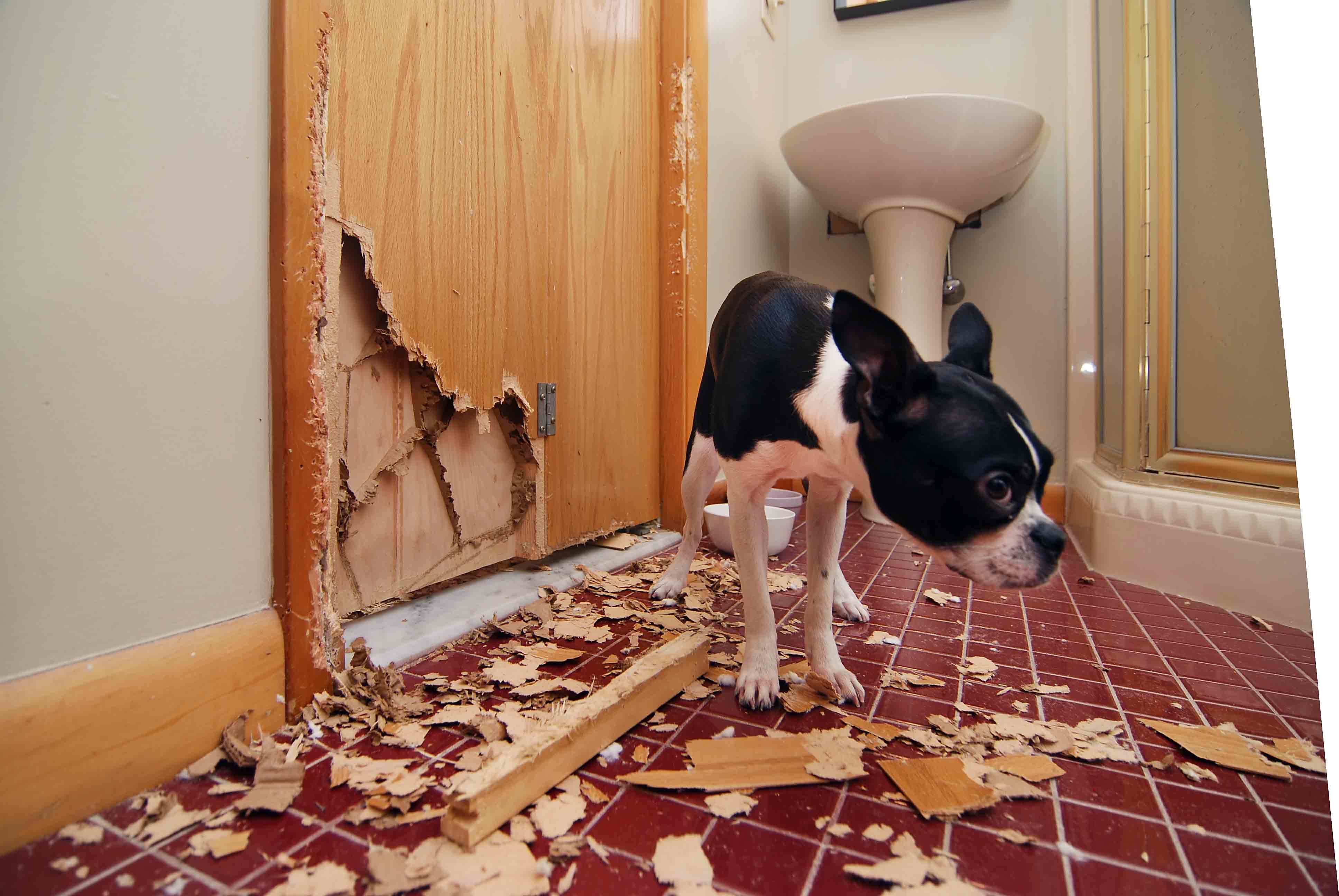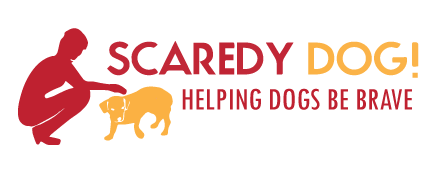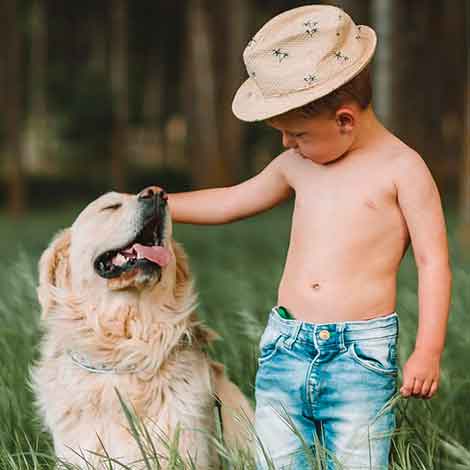Dog Separation Anxiety and Separation Distress

What is Separation Anxiety?
Separation anxiety is a fairly common complaint of dog owners, but it is often used in the wrong context. True separation anxiety is a full-blown emotional disorder similar to human panic attacks that cause the dog to become terrified when the owner leaves, and needs to be diagnosed and treated by a vet. Symptoms are highly variable, but can include: pacing; drooling; urinating/defecating; shaking; refusing food; non-stop barking, whining, or howling; and destructive chewing or digging, especially around the entrances and exits; and desperate attempts to get out of the house or crate, often leading to injury. Luckily, true separation anxiety is rare – a less panicked form of separation anxiety is separation distress, which is often what dog owners are referring to.
Both are manageable, if not curable, with desensitization and counter-conditioning. If you believe your dog has true separation anxiety, talk to your vet about medication for management. In severe cases of separation distress, medication can be helpful during the training process, but the ultimate goal is to desensitize your dog so that he doesn’t need to be medicated for you to leave.
How do I know if it’s separation anxiety?
It is very important to make sure your dog actually has separation anxiety or separation distress before you start this treatment. There are many reasons a dog may urinate in the house or bark all day long, but if you assume it’s because he’s stressed that he’s alone, this treatment will not help you or your dog. It’s best to set a camera and watch your dog’s activity throughout the day. Is your dog active after you leave and again before you come home (“Hooray, Mom left – now I can eat the trash!” and “Uh-oh, Mom’s coming home. She’s going to yell at me again”), or does your dog pace all day long? Maybe it’s that your dog has a slow constant bark (usually a sign of boredom and under-stimulation), or does your dog howl in panic the entire time you’re gone?
Does your dog urinate right by the back door (“I had to pee and nobody was home to let me out”), or in several places around the house every day? Does your dog chew up the couch (again, usually boredom) or the door that you left out of? These are important considerations in determining the true cause of your dog’s behavior and you’ll have to rule out other scenarios before you can confirm your dog is suffering from separation anxiety or separation distress.
If your dog is suffering from separation anxiety or separation distress, please be patient with your dog – your dog isn’t peeing on the carpet or eating your doorframe to punish you or make you mad. Your dog is terrified and needs your compassionate understanding to help him through this problem. Don’t punish your dog for being destructive; coming home and immediately yelling at your dog only makes your dog more anxious about you returning home.
Crate Training
Being crate training is immensely beneficial for dogs with separation anxiety. If your dog has been properly crate trained, the crate is a ‘safe zone’ where only good things happen. Your dog can calmly wait in there with a chew toy and treats until you return. If your dog is not crate trained, now is not the time to start.
Not only will putting your dog in his kennel every time you leave make him associate the kennel with bad things (which defeats the purpose of crate training), but involuntary confinement generally makes the anxiety worse. He may not be eating your doorframe, but he may be breaking his teeth on the kennel wires instead. See my guide on crate training for more information. If your dog is not crate trained, a safer alternative is to lock him in one room, or confine him to one part of the house that is easy to clean up and has little to chew on.
How to manage and treat the separation anxiety
Management is the biggest challenge while treating separation anxiety or separation distress. While you’re desensitizing your dog to be calm without you, you can’t leave him alone unless it’s for training purposes. This may mean rearranging your work schedule, hiring a pet sitter, or putting him in day care every day until he can be trusted in the house alone.
Step 1:
Practice getting ready to leave. Put your shoes on and take them back off; grab your purse and put it back down; pick up your keys and put them in your pocket. This is will teach your dog that these things are nothing to get concerned about. You are desensitizing your dog to these actions. Counter-conditioning your dog is very important as well. Give your dog a high-value treat that will last a little while (like a stuffed Kong), and then pick up your keys, put on your shoes, etc. This associates these actions with things that your dog likes. Do these several times a day for several days. Then you can pick up your keys, give the treat, and then put your keys down.
Step 2:
Get completely ready to leave and give him his high-value, long lasting treat. Then put all of your stuff away. By this time, your dog should be excited that you’re getting ready to leave, because it means he gets his treat! Repeat this several times a day for several days.
Step 3:
Get ready to leave, give your dog his treat, and open the front door, then close it and put your stuff away. Repeat this several times a day for several days.
Notes:
Don’t make a big deal out of coming back – calmly come back in and let him out of his crate if he’s crate trained. Make sure to give him a few easy ones too. You should still be doing steps 1 and 2 occasionally as well. Don’t only make it harder for your dog! Also, take heart in the fact that steps 1 through 3 are the hardest and take the longest. After you’ve mastered step 3, the rest of the training goes much quicker!
Step 4:
Get ready to leave, give your dog his treat, go outside and shut the door. Then come back in and put all of your stuff away. Gradually increase how long you stand outside before coming back in.
Step 5:
Your dog is now ready for you to be gone longer periods of time. You can leave him more than one long-lasting treat, and toys to chew on (nothing he can swallow or choke on!) while you’re gone. Playing music or turning the TV on helps calm your dog as well. There are pheromone collars and diffusers that you can make use of, and a Thundershirt or tight-fitting sweater often helps comfort smaller dogs that tend to shake.
Do you want to keep up with our training guides?
For more helpful tips on handling your scaredy dog, please take a look at our Training Guides. We also have our FAQ page and you can also find Scaredy Dog on Facebook.




